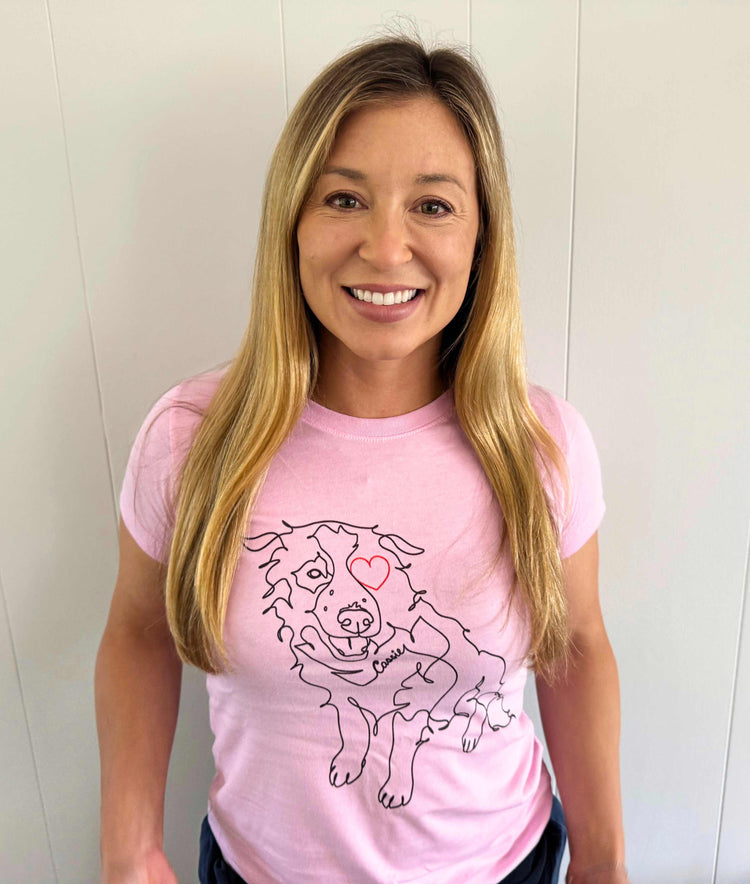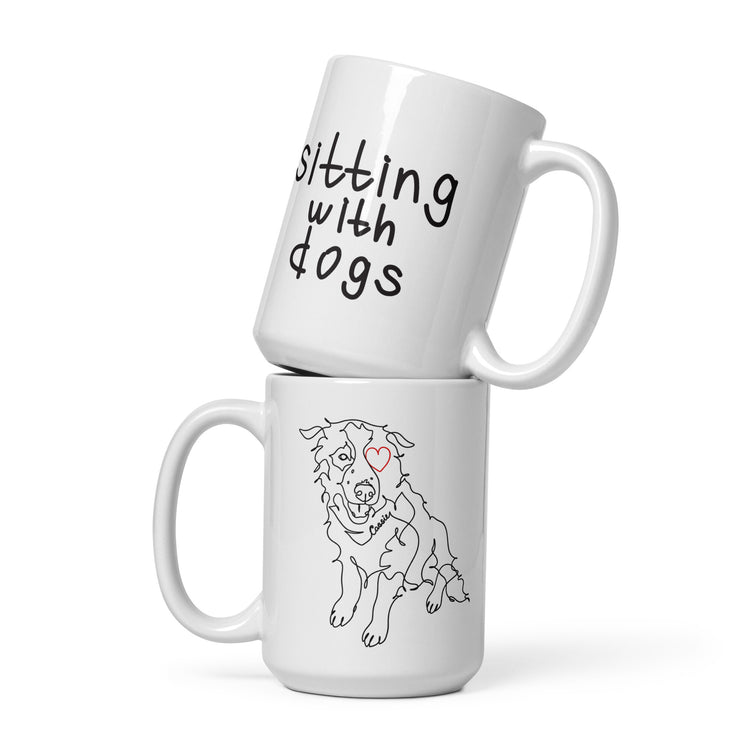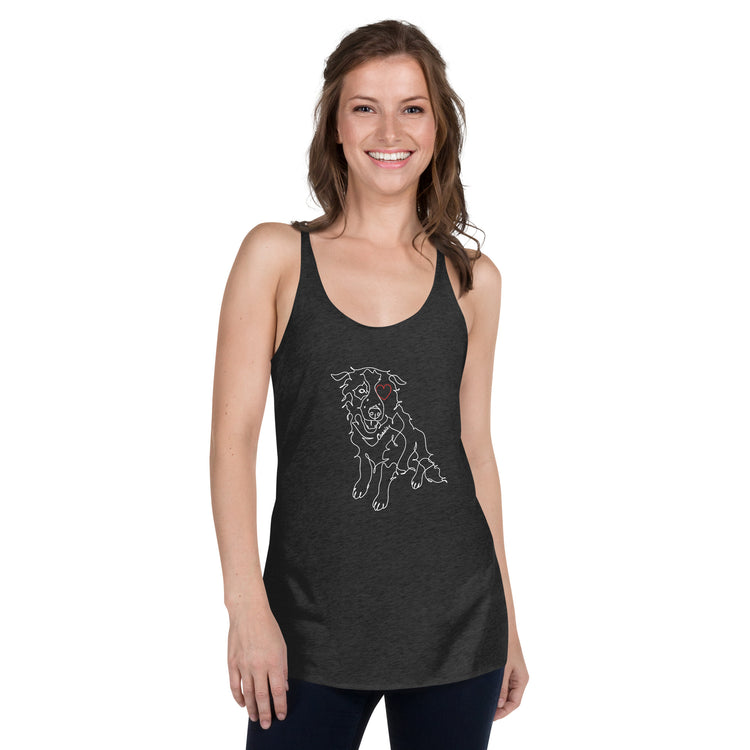She’s been Shut Down her Whole Life…Until Now 🥹
Five-month-old Bunny came into the San Jacinto shelter as part of a cruelty case. Animal control had been called to an apartment complex after someone grew concerned about the condition of several dogs in a home. What they found was heartbreaking—every dog inside was underweight, flea-infested, and living without proper care.
Bunny was one of them. She was painfully thin, her ribs and hip bones showing through her short shepherd-mix coat. An old injury to her front leg had calcified, probably from a fracture that was never treated. It wasn’t hurting her now, but it was a permanent reminder of how long she had gone without help.
I guessed she might be a German Shepherd or Belgian Malinois mix. Whatever her breed, her big upright ears and white “sock” paws made her stand out—though not for the reasons she should have. This was a puppy who had never known real comfort, and it showed in every nervous glance.

First Meeting: Eyes Wide with Fear
When I first sat with Bunny, she didn’t move. Her body was locked up tight, her eyes wide and unblinking. She’d wedged herself into the smallest corner she could find, as if making herself disappear might make the world less scary.
For a puppy to be this shut down isn’t just sad—it’s dangerous. At her age, curiosity should be winning out over fear. Instead, she wasn’t sniffing, wasn’t looking around, wasn’t even tempted by treats. Her ears did twitch when I spoke, though, which told me she was still processing, still listening. That was enough reason for me to keep trying.
Training & Trust: The Slow Approach
When a dog is frozen in fear, rushing in with affection can backfire. I know how badly people want to “hug the scared out of them,” but that’s not how fear works. It’s like telling someone with a spider phobia to spend the night in a spider-filled room—more trauma, not less.
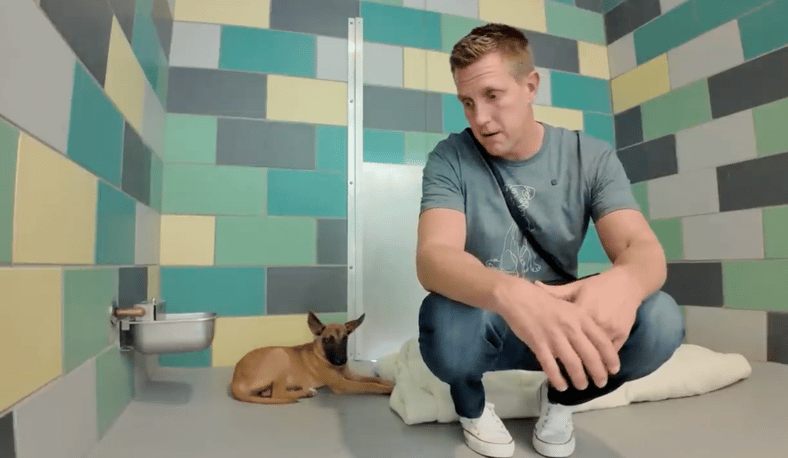
Instead, I worked slowly and deliberately. I sat at her level. I kept my movements small. I avoided direct eye contact, which can feel threatening. I offered a treat and let the scent drift toward her. Smell uses a different part of a dog’s brain than fear, so sometimes it can pull them back into the present moment.
The treats didn’t work right away. She was too deep in shutdown mode. But every now and then, her nose twitched. That was my sign she was still in there, still reachable.
Naming Bunny: Ears, Socks, and Hope
When you meet a dog who’s likely never had a name, giving them one feels like the first real step toward giving them an identity beyond “stray” or “case number.”
We tossed around ideas, but her big ears and little white toes kept pulling me back to one word: Bunny. It fit. It was soft, sweet, and full of the kind of innocence she deserved to experience for the first time.
Saying it out loud while speaking softly and offering gentle affection started to change her energy. Her ears stayed up, listening. Her eyes softened, just a little. Naming her wasn’t just for us—it was for her.
The Turning Point: The Scoop
After a while, I decided to try “the scoop.” This isn’t about restraining a dog—it’s about giving them a safe, supported space. Think of a pile of puppies sleeping on top of each other for comfort. I slid one arm under her front legs, one under her back, and lifted her gently into my lap.
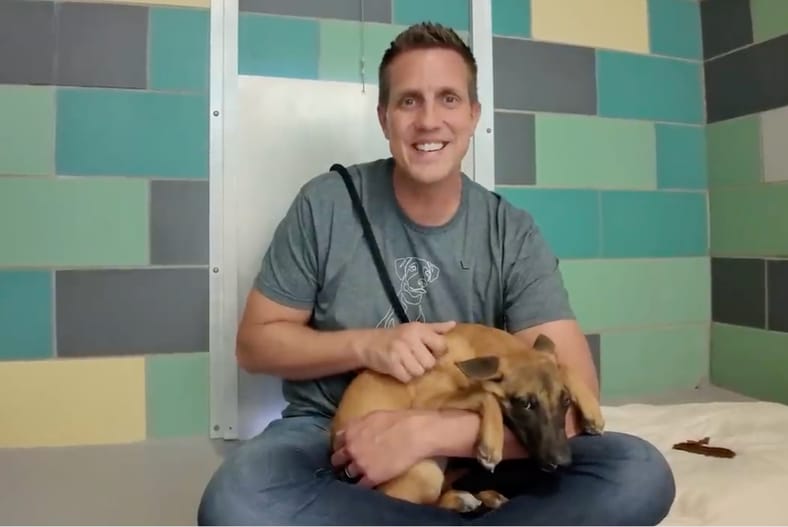
She trembled at first, but I added light compression—just enough to give her that “puppy pile” feeling. Slowly, I felt her body loosen. Her shaking slowed… then stopped entirely.
For the first time since I met her, Bunny was still.
Eyes That Tell the Whole Story
Up close, you could see how much she’s learned to communicate with her eyes. They were the only safe tool she’d had until now. Her brows lifted with curiosity, then lowered with relief. Her eyelids grew heavy, and her breathing slowed.
She had a treat tucked in her mouth that she wasn’t even eating—too relaxed now to do anything but rest. For a dog in her situation, that’s not “doing nothing.” That’s healing.
Why Dogs Like Bunny Slip Through the Cracks
Dogs like Bunny are easy to overlook in a shelter. They don’t run to the front of the kennel. They don’t wag and beg for attention. To some adopters, they might seem “too far gone.” But that’s never the case.

Fear and neglect don’t define who a dog is—they just cover up who they can be. Bunny’s still a puppy. She has time, she has hope, and now, she has a name.
Adoption Needs: What It Will Take
Bunny will need an adopter who understands that progress takes time. She’ll also need someone with the resources to have her leg fully evaluated. It may need surgery, or a vet might recommend leaving it alone, but either way, her adopter should be ready for follow-up care.
What she doesn’t need is pity. She needs patience, structure, and someone willing to let her discover that the world isn’t as dangerous as it’s been so far.
A Glimpse into the Future
I can already see it—Bunny in a backyard, ears bouncing as she chases a Frisbee, white paws flying over the grass. I can see her curled up on a couch with her person, getting head scratches she now knows how to ask for.
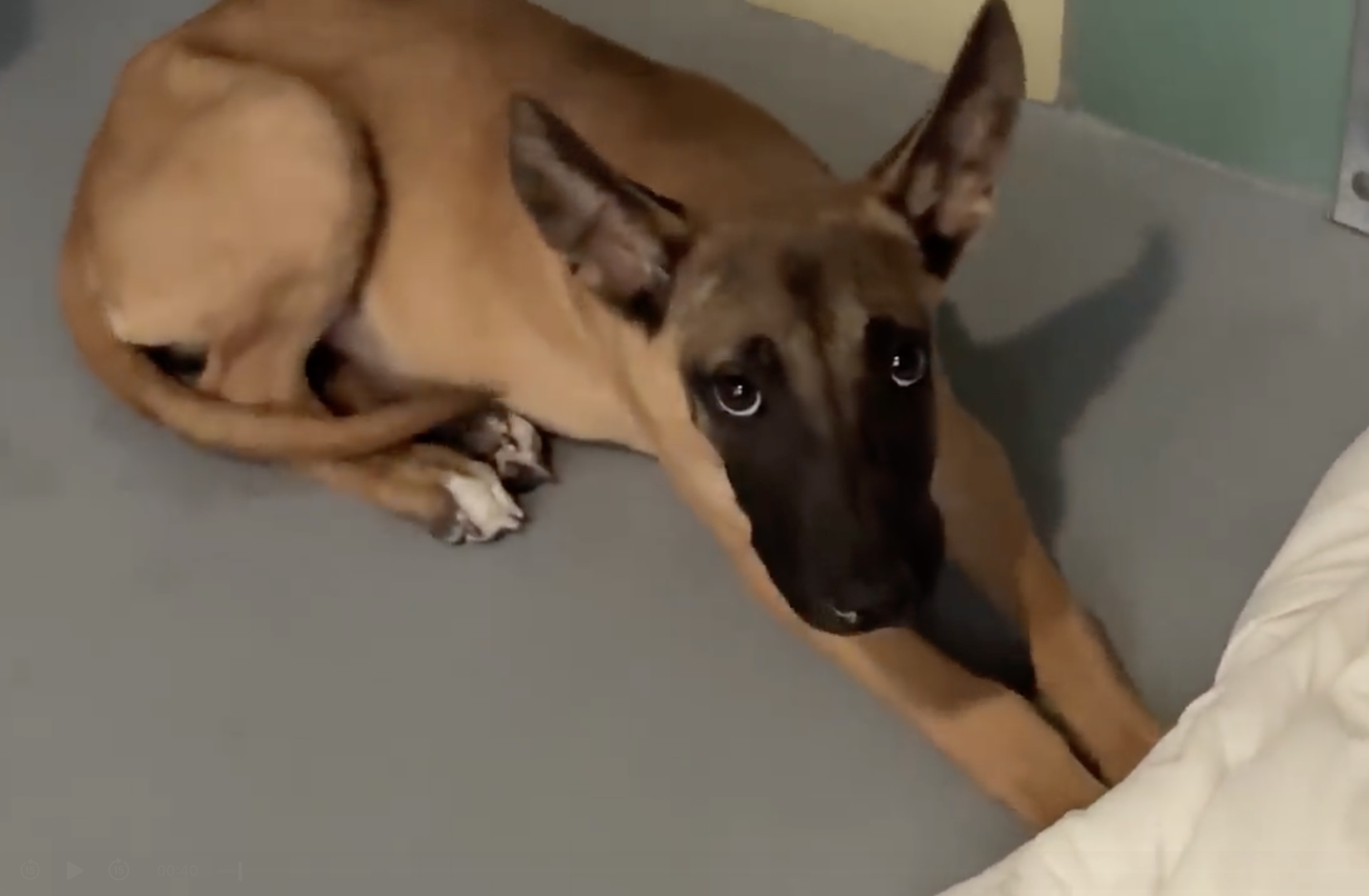
Right now, she’s still that quiet puppy who fell asleep in my lap. But with the right home, she’ll become the Bunny who leaps, plays, and finally lives the life she’s always deserved.
If you’re near the San Jacinto area and think you might be the person to give Bunny her second chance, reach out to the shelter directly. Her transformation is just beginning—and I promise, the best chapters of her story are still to come.

